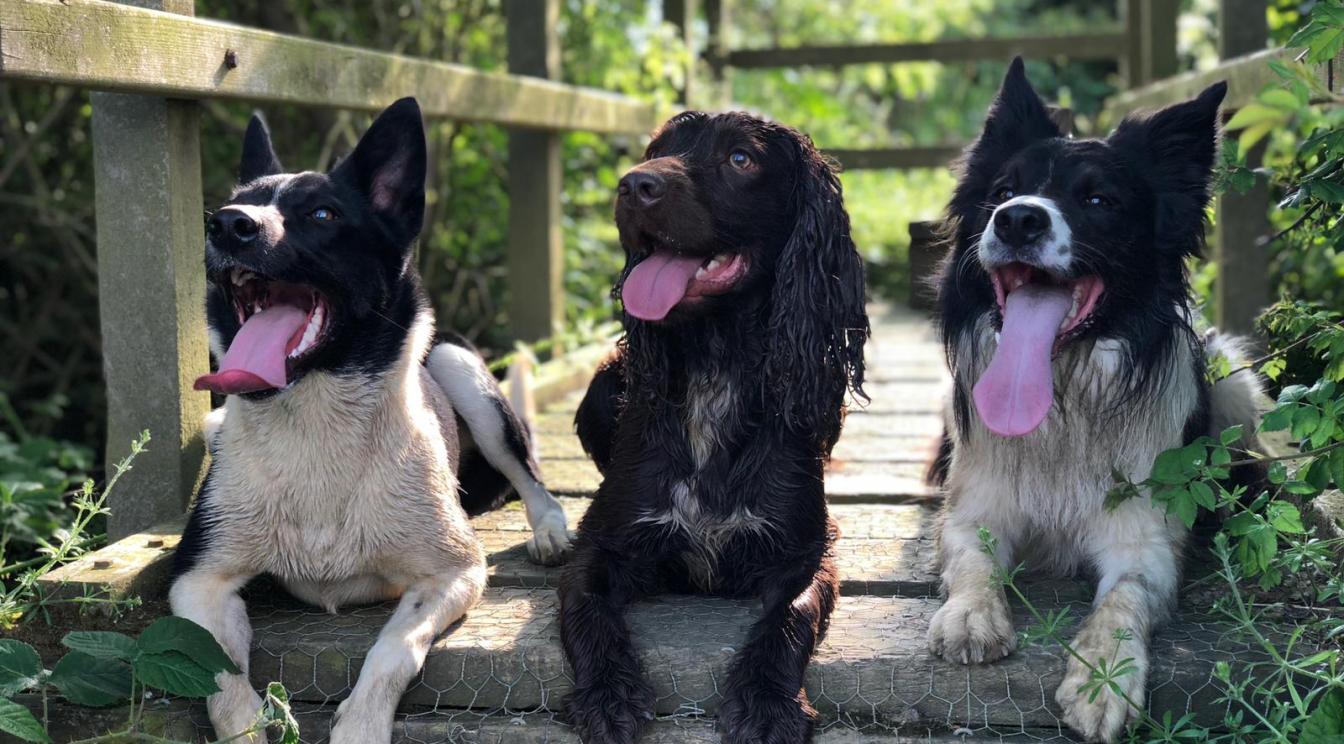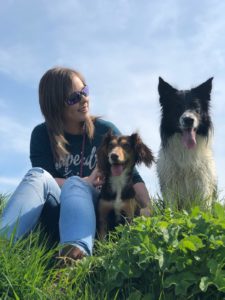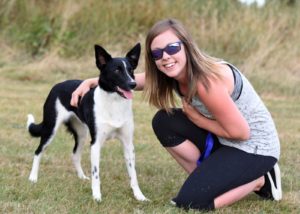
What is the difference between a Dog Trainer and a Dog Behaviourist?
This is something I get asked a lot. And with our name change to On The Ball Dog Training and Behaviour, we thought that a blog would be a great way to explain what the differences are between different dog trainers, different behaviourists when it’s a good idea to see a behaviourist, and what type of dog trainer is right for you.
Types of Dog Trainers
The dog training world is a huge mix of types of trainers that use varying methods as well as the types of behaviours that they choose to get involved with. Sadly it’s quite an unregulated industry when it comes to trainers, and there are very different trains of thought although some do overlap. As a quick guide, here is our take on the different types of dog training:
Type 1 – Aversive
Typically these types of trainers will use force and punishment to get the desired result from a dog. If the dog does something that the trainer doesn’t like, eg bark at another dog or lunge towards something, then the trainer will use a form of punishment to stop the dog from doing the undesired behaviour. That could be something as simple as a harsh leash jerk, to something more painful like a prong or e-collar, rattling cans – anything that would hurt or upset the dog to the point that he stops doing it.
In theory, these concepts work quickly and well.
But they do absolutely nothing for your relationship with your dog. A fearful dog is not a happy dog, nor as the research suggests, is it a safe way to carry out training. The more physical punishment you give a dog, the higher its chances are of biting you.
Because these trainers use a lot of aversives, they tend to work with stronger unresolved behaviour problems and often larger dogs, citing that the only way to ‘control’ those dogs is to use aversive methods – which from our experience just isn’t true. There are other ways.
We don’t use aversive punishment techniques for this very reason. They are very outdated theories (like the debunked Alpha dog theory) used by people who are not open to discovering the latest research. Some people just don’t like change – but we are flexible and know that being flexible and open to possibilities is being the best owner and trainer for our dogs.
Type 2 – Reward-based trainers
These trainers reward dogs for good behaviours. They do a lot of obedience training and rely on strong obedient dogs to fix some of their behaviour struggles.
They may say that:
- If your dog is pulling on lead and trying to play with every dog at the park, then get a concrete side heel and the problem will be fixed.
- If your dog keeps jumping up at everyone, get a good ‘stay’ on cue.

These are the most common types of trainers. They don’t use punishment and some (not all) will say to ignore the bad behaviour and reward the good. These are good trainers and for some dogs this style of training may work. But the majority of people we find that use this training just don’t seem to get the results they need.
The thing is, the more you just ignore the behaviour, the more prevalent it becomes. We call it rehearsal. Rehearsal can be good, or it can be bad. You can read more on our blog here.
These trainers will generally look at dog training and dog behaviour as two different things and will often refer you to a behaviourist if they see something about a dog they think is ‘aggressive’ or out of their realms of knowledge.
Type 3 – Concept Trainers
Yep you guessed it. At On The Ball Dog Training and Behaviour, we are concept trainers.
We are a convergence of dog training and behaviour because concept training tackles both. Dog struggles ARE behaviour struggles.

We teach our dogs based on concepts. We build these concepts into our dogs so that THEY make the right decisions. We don’t nag. We guide our dogs and we help to mould and re-shape their brains. All of these concepts can be strengthened and applied to any dog. No matter what behaviour problem they are experiencing.
We teach our dogs concepts such as:
Calmness – For dogs that REALLY struggle to stop. Dogs that are on the go all the time.
Flexibility – For dogs that struggle to be in different environments, or behave the same way in different places.
Confidence – So that your dog can cope with anything in life. Very important for dogs that are fearful and often labelled as ‘aggressive’
Optimism – For dogs that worry a lot. Dogs that are unsure about noise, or that bag blowing in the wind.
Arousal Up and Down – It’s pretty easy to get our dogs excited, but can they calm down quickly when we need them to?
Boundaries – And we’re not just talking beds. Can your dog stay on a boundary in an emergency when out – a tree stump, a drain cover. Anything can become a boundary.
Yes we run obedience classes and help you to teach your dog to walk on a loose lead, but we do it in a huge variety of ways that look at more than just your dog heeling – we get your dog to think about the concept of proximity to you as a whole.
We can help with dogs that have been previously labelled as aggressive or suffering from separation anxiety. We can help with loose lead walking and recall. Because we train concepts, not behaviours. Concepts ‘shape’ the dog’s behaviour.
We also don’t ignore unwanted behaviour. We advocate for our dogs so that they don’t get into those situations in the first place. We wrote a great blog on managing struggles in the moment here.
When do you need to see a Behaviourist?
There are instances where a dog may need more than training. As we have been working in the dog training and behaviour field for over 10 years, and work closely with a leading Vet Behaviourist, we are well placed to help advise on this. We would always recommend seeing a Vet Behaviourist over an Animal Behaviourist where you can, because of the breadth and depth of knowledge that they have.
Vet Behaviourists
When mixing dog training and behaviour training, you want to make sure that the training is aligned with all the parties involved. The Vet Behaviourist that we work with specialises in concept training and is one of the original founders.
If we feel that genetics or the possibility of pain may be playing a part, we would always recommend seeing someone specialised in that field and we will refer you to our Vet Behaviourist.
A Vet Behaviourist is a Vet that has gone on to specialise in dog behaviour and will often still be practicing as a Vet.
Animal Behaviourists
Sadly anyone can call themselves a dog trainer.
But an Animal Behaviourist needs a certification. In order to obtain their certification, they will have to prove they have had additional academic studies, carried out 10 cases in the previous 12 months, and pass the assessment with the CCAB (Certificated Clinical Animal Behaviourist).
A Vet may refer you to one of these behaviourists.
The Dilemma
The problem we find is that a dog’s struggles can be very subjective.
A dog that you may think is out of control, to us needs to learn how to be calm, and a lot of confidence-boosting. Vets are not dog behaviour specialists and so the advice you may get will differ from one Vet to another.

Head Trainer Nikki is closely coached by a Vet Behaviourist and a world leading Agility winning dog trainer. Nikki is qualified in Advanced Canine Behaviour & Psychology and has a degree in Zoology. Nkiki has also had hundreds of behaviour consults and runs a thriving dog training and behaviour business.
We are passionate about concept training. We know it works, but at the same time we don’t pretend to know everything.
We understand the dilemma that many of our students face when looking for answers to their dog behaviour struggles, and we hope that this blog gives you a clearer understanding of the avenues you can take, and feel confident in your decision to work with us.
If you would like to join us for a free training class to see what we are all about first hand then fill out the form in this link.
